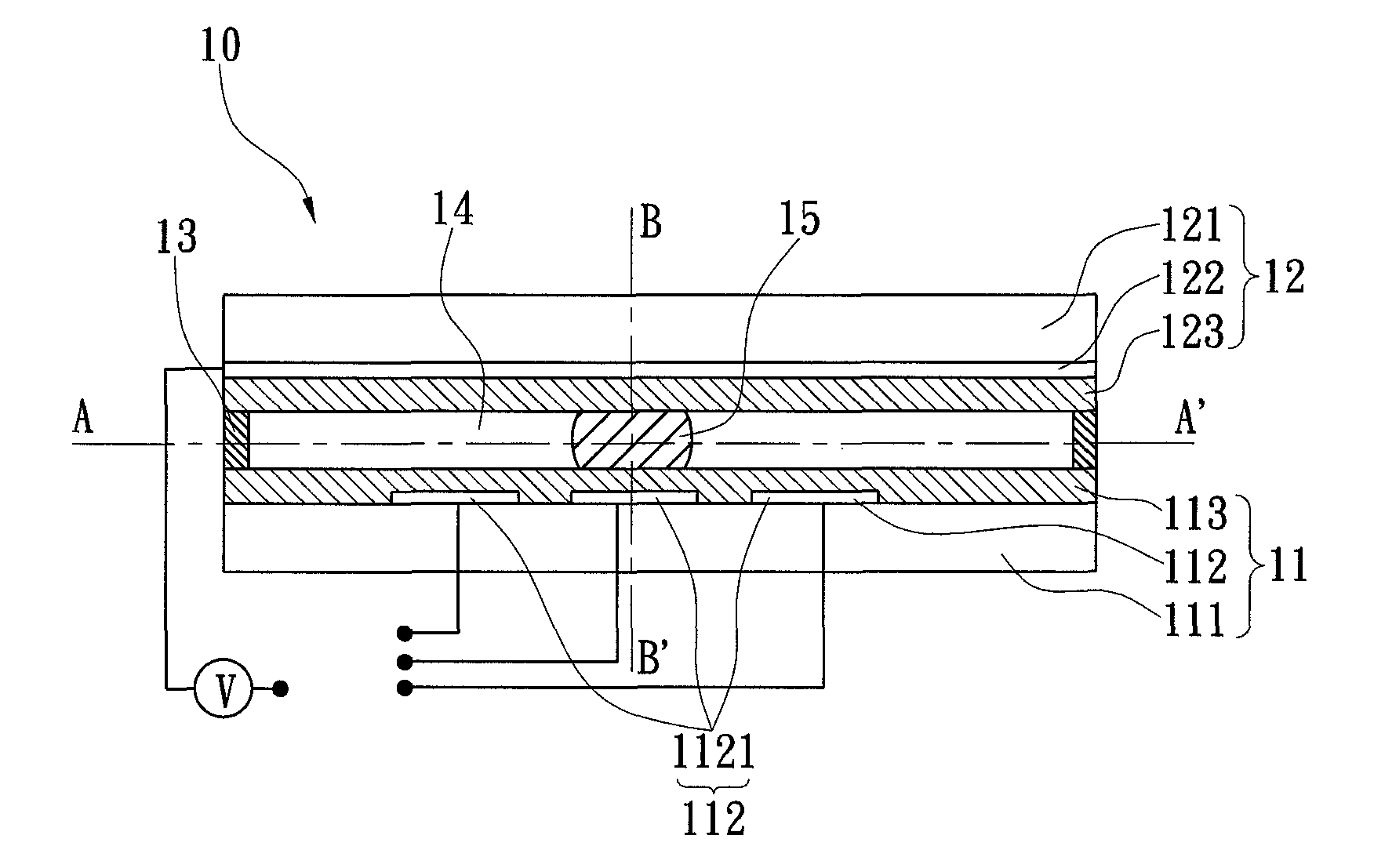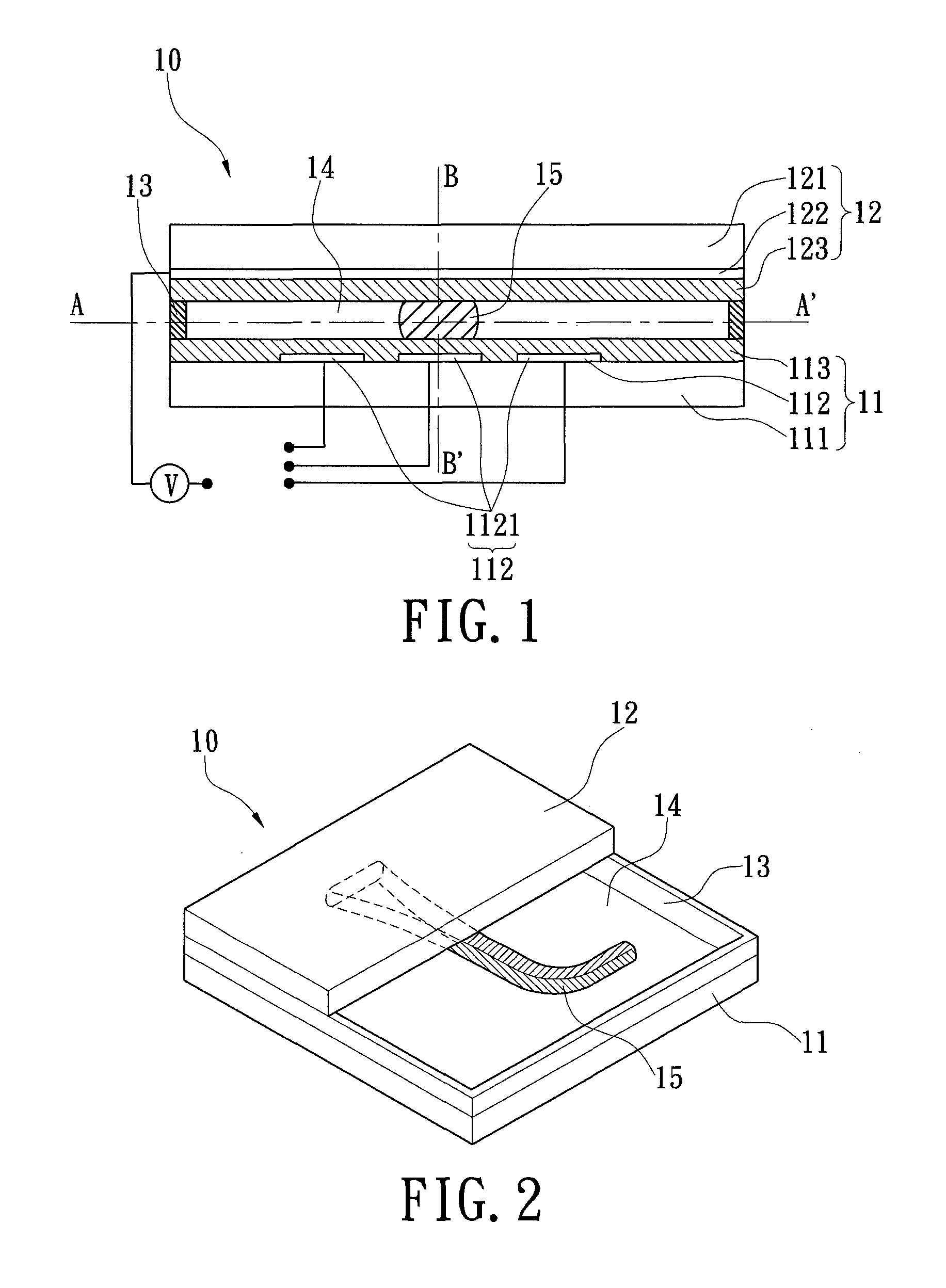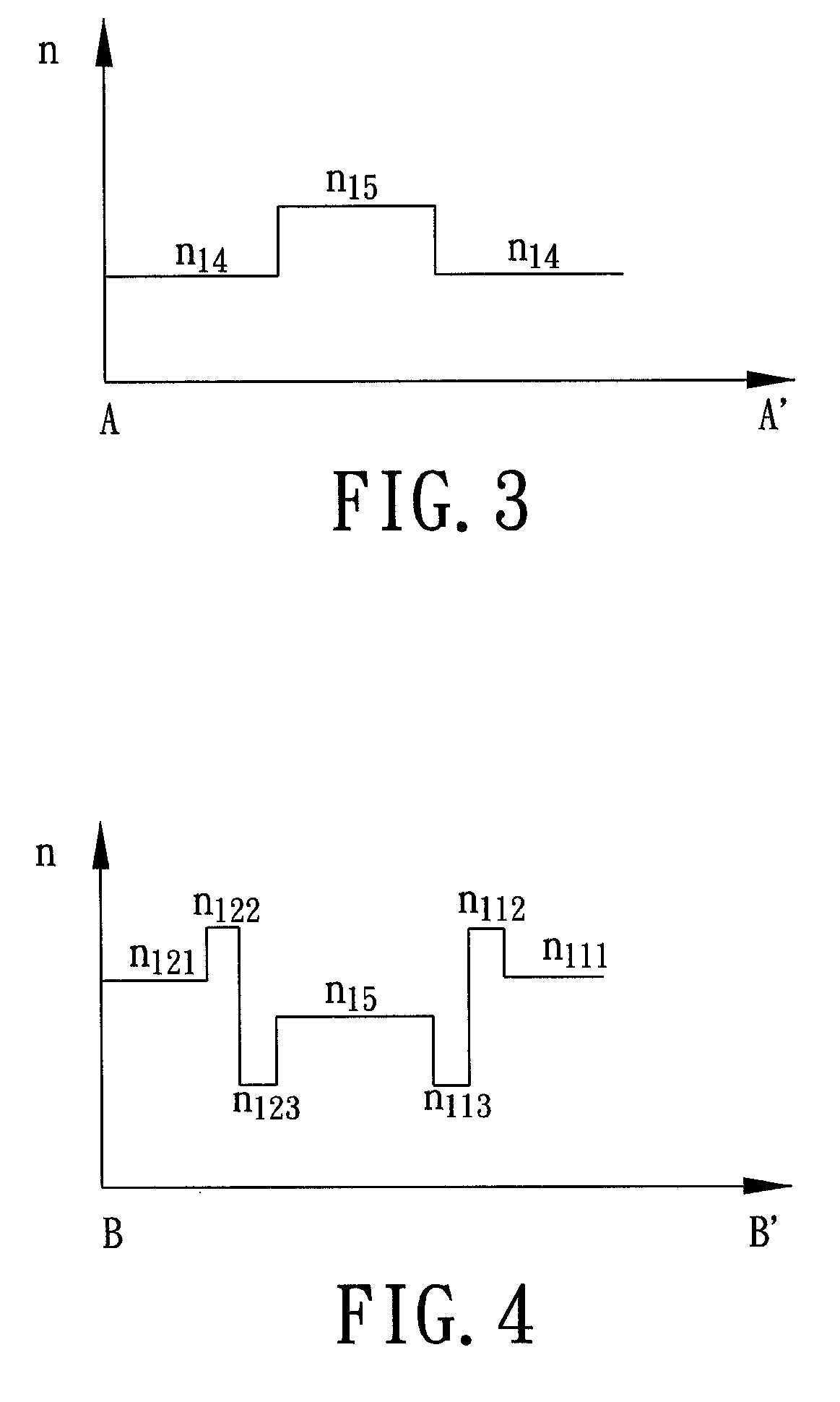Device and method for transmitting light signals
a technology of light signals and devices, applied in the field of devices and methods for transmitting light signals, can solve the problems of increasing the overall dimensions and cost of the microfluidic system, rough surfaces, and inability to transmit light signals, so as to reduce the effect of attenuation of light signals
- Summary
- Abstract
- Description
- Claims
- Application Information
AI Technical Summary
Benefits of technology
Problems solved by technology
Method used
Image
Examples
second embodiment
[0052]Please refer to FIG. 9, the device 10 is disclosed. The first patterned electrode layer 112 comprises a spiral shaped electrode 1121; the core fluid 15 would change its shape to a spiral one to fit the electrode 1121. Please refer to FIG. 10, it is observed that the light ray is transmitted along the spiral-shaped core fluid 15.
third embodiment
[0053]Please refer to FIG. 11, the device 10 is disclosed. The first patterned electrode layer 112 has several separated and curved electrodes 1121A-C parallel to each other. Please refer to the top and side observations of FIGS. 12(a) and 12(b), respectively, an electric potential is applied to the electrode 1121A, and then the core fluid 15 surrounded by the cladding fluid 14 forms an optical waveguide on the electrode 1121A. After that, the light ray can be transmitted within the core fluid 15 and toward the output end (the right end) of the core fluid 15, so one can see a bright point on the output end of the core fluid 15. Please refer to FIGS. 13(a), 13(b), 14(a), and 14(b), when the electric potential is applied to another electrode 1121B or 1121C, the core fluid 15 will shift to that electrode 1121B or 1121C and form a new optical waveguide on that. Then, the light ray will change its transmitting path according to the shifted core fluid 15, so one can see that the bright po...
fifth embodiment
[0055]Please refer to FIG. 16, the device 10 is disclosed. The device 10 is disposed in a Mach-Zehnder interferometer, and the first patterned electrode layer 112 of the device 10 has a straight-line shaped electrode 1121. Light ray is emitted into a beam splitter 22 from a light source 21, and divided into two light rays. The upper light ray is transmitted into a collimator 23, concentrated by a lens 24, and coupled into the core fluid 15 on the electrode 1121. After that, the upper light ray is transmitted within the core fluid 15, leaves the core fluid 15, and finally enters the first detector 25. Meanwhile, the lower light ray which is entirely transmitted in air is reflected twice by the mirrors 26 and enters the second detector 27. From the two detectors 25 / 27, the phase relationship between the upper and lower light rays can be understood. In other words, the phase shift of the light ray passing through the core fluid 15 can be understood.
PUM
 Login to View More
Login to View More Abstract
Description
Claims
Application Information
 Login to View More
Login to View More - R&D
- Intellectual Property
- Life Sciences
- Materials
- Tech Scout
- Unparalleled Data Quality
- Higher Quality Content
- 60% Fewer Hallucinations
Browse by: Latest US Patents, China's latest patents, Technical Efficacy Thesaurus, Application Domain, Technology Topic, Popular Technical Reports.
© 2025 PatSnap. All rights reserved.Legal|Privacy policy|Modern Slavery Act Transparency Statement|Sitemap|About US| Contact US: help@patsnap.com



